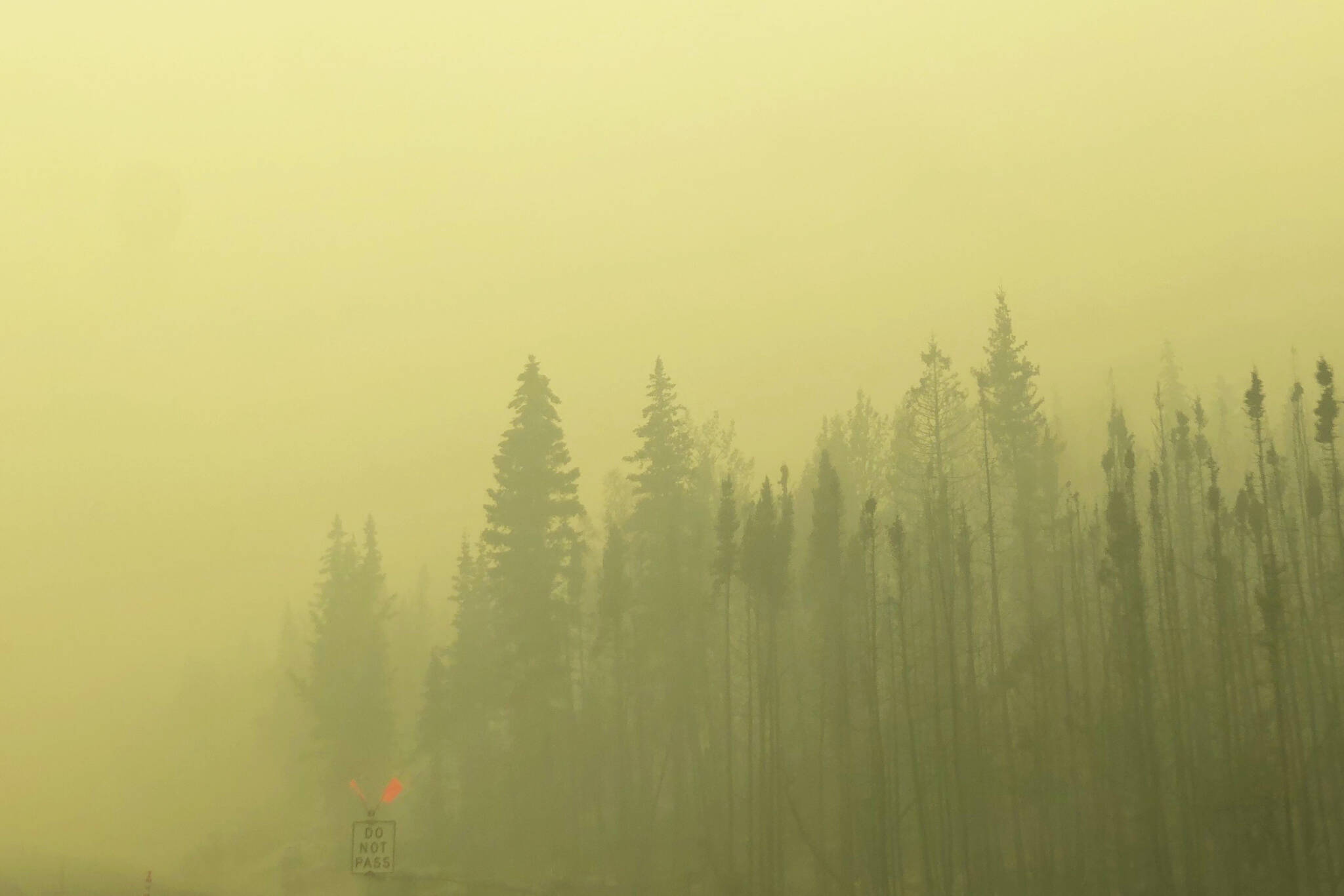By Norm McDonald,
Bobette Rowe and
Kent Slaughter
During the transition from break-up to early summer, we often hear the question: Will this winter’s abundant snowpack keep Alaska from having a big wildfire season?
Although above average winter snow often keeps summer fire danger low in the western Lower 48 states, it doesn’t necessarily ring true in Alaska.
Several past large fire seasons followed snowy winters or unusually rainy springs — including 2004, the state’s record season in terms of number of acres burned at 6.5 million. Fire danger in Alaska depends more on short-term weather conditions in conjunction with our longer days
As Alaska’s climate changes, those hot, dry and windy weather conditions are becoming more frequent, starting earlier in the year, and ending later. These high fire-danger conditions are incredibly challenging to predict. When adding human activity that may spark an ignition, a wildfire can quickly spread and endanger people and property.
The recent Kwethluk Fire in Southwest Alaska is a good example of an early wildfire that spread quickly. That tundra fire, likely human caused, quickly burned through dry, dead grass and grew to 4,000 acres within two days of ignition. At more than 10,000 acres, or an area covering more than 15 square miles, it is now Alaska’s largest April wildfire in at least 25 years.
In mid-August 2019, strong winds fanned the human-caused McKinley Fire along the Parks Highway corridor, leading to evacuations and devastation, destroying 130 structures, and causing more than $200 million in damages to homes, businesses and infrastructure over three days. Due to the abnormally warm and dry weather in Southcentral Alaska that year, firefighters were still working on wildfires until mid-October.
These recent examples are a reminder to Alaskans to prevent and prepare for wildfires across the state and throughout the season. From when the snow melts and until it falls again, Alaskans need to remain vigilant. As we head into Wildland Fire Prevention and Preparedness Week, May 8-14, it’s time to remind people of key ways to protect each other and our communities from wildfire dangers.
Alaska’s fire season is longer
On average, Alaska’s snowpack now melts two weeks earlier than it did in the late 1990s. This trend has led to an earlier start to fire season. Starting April 1, residents are required to get a Division of Forestry burn permit (https://dnr.alaska.gov/burn) and follow its guidelines for burning yard debris, using a burn barrel or burning off lawns on state, municipal or private lands. We already had 25 avoidable human-caused wildfires in Alaska in April this year, putting homes at risk.
Human-caused fires are more costly and life-threatening
Human-caused fires make up approximately 60% of Alaska’s wildfires. Those human-caused fires tend to occur closer to communities, threaten lives and property, and require more resources to control than lightning-caused fires, which tend to be more remote. Preventing these ignitions is the most effective way to control wildfire costs and limit the damage wildfires can cause. Be vigilant with anything that can spark a fire, including equipment like chainsaws and off-road vehicles, burn barrels, barbecues, ashes and campfires — especially in dry and windy weather.
Fuel breaks protect homes and communities
Another proven way to protect Alaska communities from wildfires and save money is by constructing fuel breaks between populated areas and wildlands. A fuel break is a gap in vegetation that acts as a barrier to slow or stop the spread of wildfire. Federal, state, tribal and local agencies are working together to create fuel breaks that reduce flammable vegetation and enable firefighters an opportunity to work more safely near communities. Fuel breaks helped firefighters protect nearby communities from recent Alaska wildfires, including the Funny River Fire in 2014 and the Shovel Creek and McKinley fires in 2019. Homeowners who follow FIREWISE guidelines on the Alaska Division of Forestry website at http://forestry.alaska.gov/fire/firewise.htm can help this effort by preparing their property before a wildfire occurs. When adequately prepared, a house can withstand a wildfire even without intervention by firefighters who may need to travel a great distance to respond.
Smoky days are increasing in Interior Alaska
During active wildfire seasons, smoke particulates dominate air pollution in both Southcentral and Interior Alaska. Smoke can limit visibility so much that air travel is not possible, and poses a significant health hazard, especially to children, the elderly, and those with existing heart and lung conditions. Learn how to reduce your exposure to smoke (https://dec.alaska.gov/air/anpms/wildfire-smoke/).
More information about how Alaska’s fire seasons are changing is available in a recent report from University of Alaska Fairbanks International Arctic Research Center and the Alaska Fire Science Consortium called Alaska’s Changing Wildfire Environment.
Norm McDonald is the chief of Fire and Aviation for the Division of Forestry, Alaska Department of Natural Resources. Bobette Rowe leads Fire Operations for the U.S. Forest Service in Alaska. Kent Slaughter is the manager of the Bureau of Land Management Alaska Fire Service.

